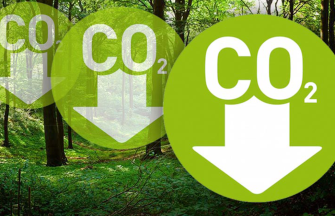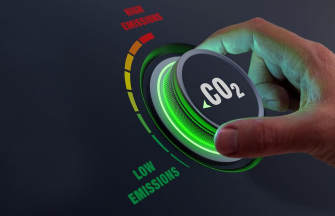
We reduce our CO2 footprint and that of our customers
Europe (EU), with its recently confirmed ambition to reduce at least 55% of emissions in 2030 compared to 1990 emission levels, has been a leader on tackling climate change with its Green Deal. As in many other countries, (including recently the US), the ambition is to be climate neutral by 2050.
The Green Deal has boosted initiatives such as reducing EU emissions, using the EU Emissions Trading system (ETS), increasing renewables in the EU energy mix, and pushing for energy efficiency improvements. We are now expecting similar initiatives to develop in the U.S. under the Biden administration and the already existing ones to be accelerated.

This puts a lot of pressure on our industry, not only economically, but also because we genuinely believe we can contribute to a more sustainable way of operating our business, in line with our company’s vision of “contributing to a better world”.
For lime, there are two main and distinct sources of CO2. Combustion CO2 (~25 to 35%) is produced from the burning of fossil fuels, while process CO2 (~65 to 75%) results from the calcination of limestone. These sources have different mitigation solutions. Combustion CO2 can be reduced by energy efficiency and fuel selection, as well as by carbon, capture utilization or sequestration (CCUS); process CO2 can only be addressed by CCUS.
Sustainability lies at the heart of the Carmeuse CO2 Roadmap. With the ultimate target of carbon neutrality by 2050, this sets out key milestones for drastically reducing our carbon dioxide (CO2) emissions over the coming decades. This roadmap structures our work around some key initiatives and programs, optimises vital resources and helps us to connect both our employees and stakeholders. This is also an opportunity to show our leadership in CO2 efficiency and develop CO2 services.
CO2 will become a key driver for the location of our future production assets globally.
In the short term (until 2025), we will focus on reducing combustion CO2 essentially through kiln modernization, biofuels and energy efficiency. The Capex needed for these initiatives are part of our Business Plan.
As of 2025, we will progressively deploy technological solutions that are currently under development at TECforLime. These technologies allow for concentration of CO2 at the exit of the kiln. Such concentrated CO2 should then be possible to use in e-fuels and fossil-free chemicals production (CCU) on one hand, or sequestrated in deep mines or reservoirs (CCS) on the other. In addition to reducing Carmeuse’s emissions, we are developing solutions to help our customers reduce their own CO2 footprint.
By 2030, we are committed to reduce our global footprint by at least 30% in Europe and 17% in North America through fuel switching and energy efficiency, in conjunction with CCUS ready kiln technologies.
The target is ambitious but we are confident to achieve it.


